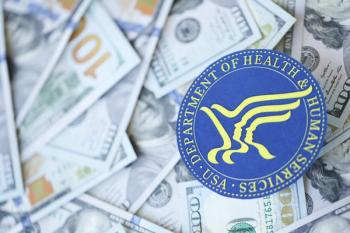
New Primary-care Models Can Change the Way You Practice Medicine
Feel like you can't do the fee-for-service practice model anymore? Here are several examples of new models in primary care that may the answer for you.
Feel like you can't do the traditional fee-for-service insurance practice model anymore? Here are several examples of new models in primary care that may the answer for you:
1. Nursing home only
Some physicians have realized that they can no longer afford the office-based costs of utilities, staff, storage, and equipment. Well, who pays the nurse who brings a medicine for your patient in a nursing home? The nursing home. Who pays for the desk you sit at and the fax you use at a nursing home? The nursing home. Get the point? Many physicians who have robust nursing-home patient bases have found by traveling from facility to facility, and never seeing patients in an office, they can substantially reduce their overhead. Imagine having a geriatric practice where instead of seeing 25 to 30 patients in the office every day, you are seeing maybe 10 patients per day in a skilled nursing facility environment - and making the same income or more!
2. Concierge
Concierge practices offer benefits to both the physician and patients: because physicians have a lower patient volume there's more time to spend with patients, which tends to improve quality of care. The problem with concierge practices is that for many patients they are unaffordable, so access to this quality care is still a problem. Also, if every physician was to work in this model, the physician shortage would be much worse due to significantly smaller patient panels.
3. House call only
Similar in concept to the nursing home model, physicians who practice the house call model literally see patients wherever they are. Some physicians will schedule appointments at the patient's place of work, some at the patient's house, and some at hotels. The idea that you don't need a brick-and-mortar office - sans utilities and traditional expenses - to practice medicine is not new. Many physicians back in the "Doc Baker" days practiced this way. If they did have an office it was just a place to store equipment and medicine. One group in North Carolina, Doctors Making House Calls, has been very successful in recruiting physicians to work in this model. A big draw is the ability to make a good income, while maintaining a lower patient volume. However, there are some drawbacks: Many office-based procedures would be difficult to perform without equipment, furniture, or supplies that are not portable via car. Home facilities sometimes are not equipped with all of the necessary fixtures that are needed for certain scopes of practice. And, chaperones may need to accompany the physician on home visits with patients of the opposite sex, as a liability precaution.
4. Work-place onsite clinic
Many employers are realizing that they suffer significant economic losses from reduced productivity for employees who call out sick. Many employees take a whole day off just to be certain they can go to their physician appointment and have enough time to wait and be seen. Many employers are establishing health clinics at the workplace. These clinics allow patients to "walk" to their appointments, and often, to be seen on the same day - without having to miss any significant amount of work. Also, many of these onsite clinics are very prevention focused, offering ergonomic training, vaccination clinics, and wellness fairs and screenings to help detect and prevent disease. While some employees are concerned about "lack of confidentiality," most appreciate the convenience. The major drawback here is patient choice of provider; usually there are only a few healthcare providers staffed at these onsite clinics.
5. Direct pay
In this option, which is near and dear to my heart, patients or their employers pay the healthcare providers directly for their care. Without the bureaucracy of filing, appealing, and collecting insurance payments, overhead can be dramatically reduced. This allows for longer visits and significantly lower out-of-pocket costs for those patients without insurance, It also works well for those with high deductible plans. The Affordable Care Act specifically singles out these types of direct-pay arrangements as nullifying the patients ' duty to buy a sanctioned plan under the mandate since the arrangements can be included in health insurance exchanges. Since physicians see a normal-sized panel, but with longer visits and no need for "milling volume," there are the same benefits as a concierge model for the physician and patient in terms of quality of care. However, since out-of-pocket costs are actually less, this model does not create a financial barrier for patients, where traditional concierge models can. Also, if overhead is kept low, and collections near 100 percent, physicians can expect higher than normal incomes without the need to be on the "patient treadmill."
6. Patient-centered medical home
The patient-centered medical home care model came out of the work done by the Future of Family Medicine Project, and has become synonymous with the "ideal" primary-care medical practice. However, the term is not mutually exclusive of other care models, which could also become patient-centered medical homes. This model accomplishes two goals well. First, it modernizes practices and causes system- based reforms like referral tracking, coordination of care, and a more efficient use of EHRs. However, many of the national pilot programs have not been wildly successful in improving outcomes or reimbursement, just yet. While some insurers are offering incentive payments to help bolster reimbursement, payment reform has to follow that adequately compensates for the economic and time investments made by practices to accomplish this evolution. Regardless, this is an important movement and will help modernize and streamline the traditional primary-care practice.
Brian Forrest, MD, is the founder of Access Healthcare, Direct Pay Health, and Physician Care Direct. He serves as an adjunct associate professor at UNC Chapel Hill School of Medicine where he teaches a class called "New Models of Care." He can be contacted at
Newsletter
Optimize your practice with the Physicians Practice newsletter, offering management pearls, leadership tips, and business strategies tailored for practice administrators and physicians of any specialty.













